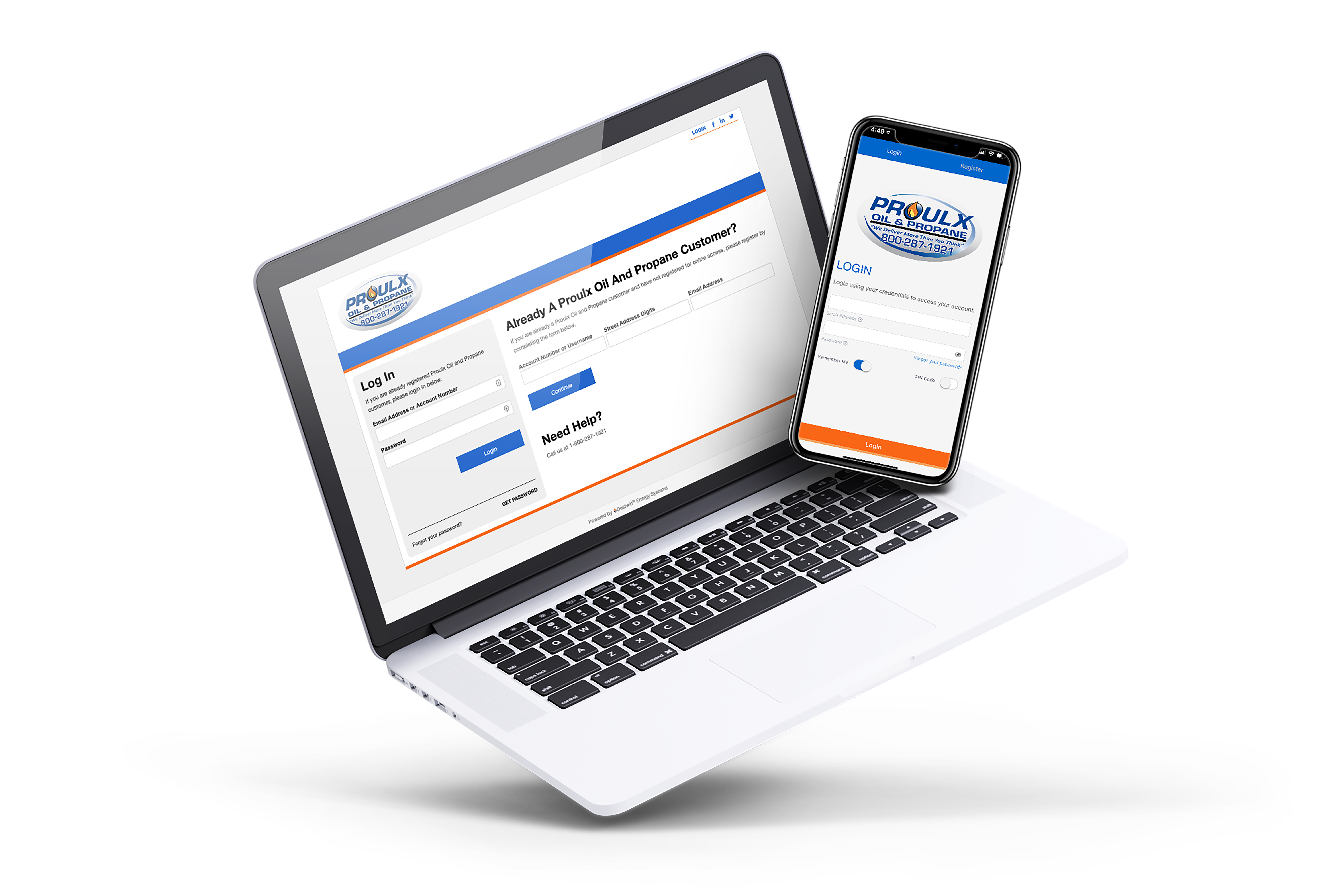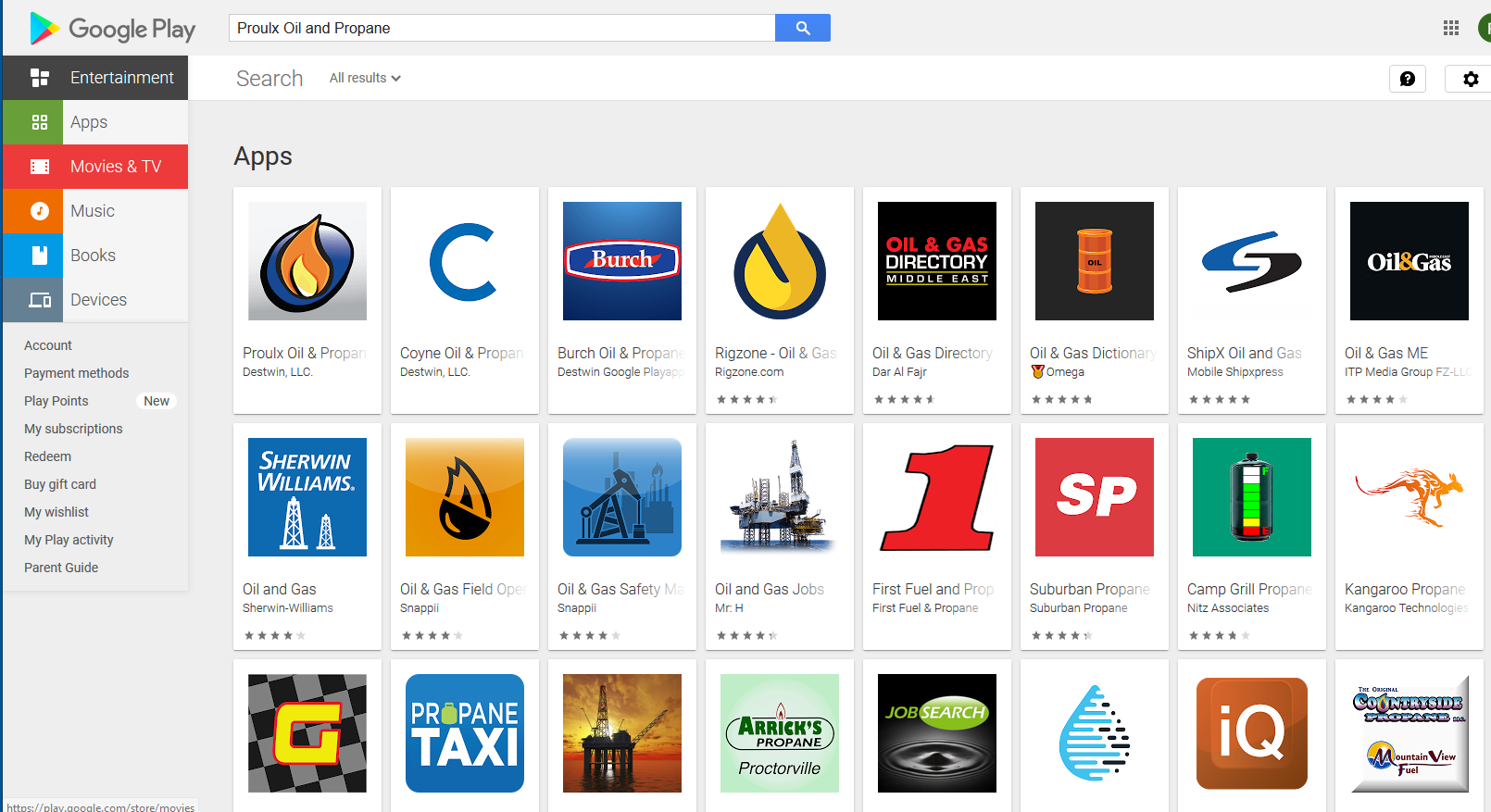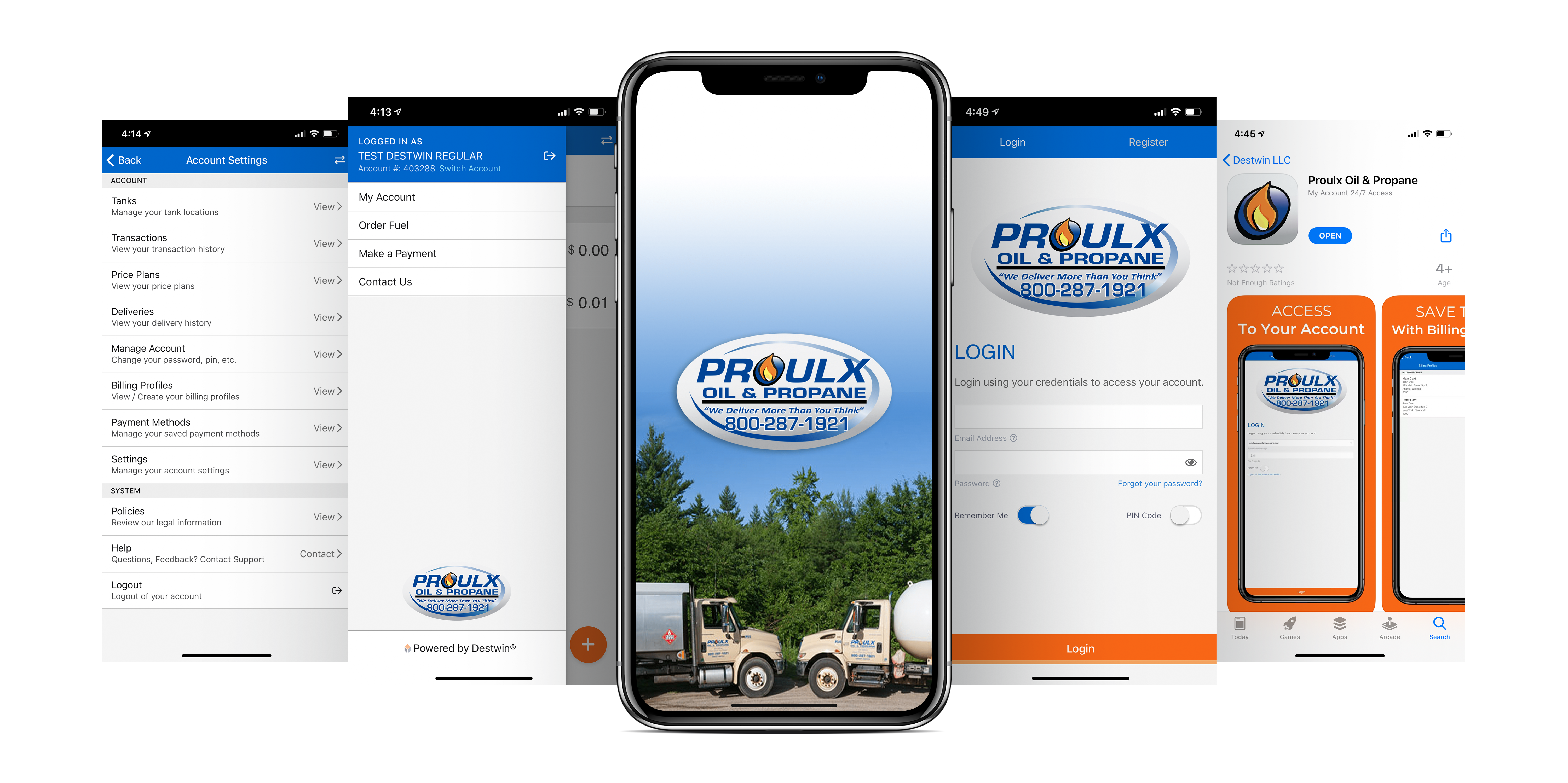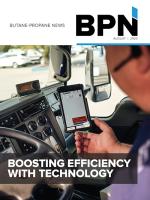Friday, August 14, 2020
When Proulx Oil & Propane (Newmarket, N.H.) saw that half their customers were doing business them over mobile phones, the company decided to make that contact even easier. The provider of propane, fuel oils, and equipment contacted the provider of its e-commerce system and invested in an app. 
In mid-June, the Proulx Oil & Propane Mobile App was officially launched. Now, with just a tap on their phone or tablet, customers can make payments, view their transaction history, order fuel, view delivery history, manage tank locations, see their current price plans, and request service.
“We realized that our customers were increasingly looking to do business with us over their mobile phones and this application gave us an all-new way to get closer to them,” Maribeth Girard, marketing assistant at Proulx Oil & Propane, told BPN.
The app was developed by Destwin Energy Systems (Sandy Hook, Conn.), which had already provided the e-commerce system that integrates Proulx’s back-office data with its customer web portal. The Destwin Connect Mobile App is a seamless extension of the Destwin Customer Portal. The app is customized and branded for Proulx; it includes Proulx’s app icon, splash screen, Google Play feature image, and a Google Play promo video. It is available for both IOS and Android devices.
“The app puts our products and services directly in the palms of our customers,” Girard noted. “We feel this is an important tool in today’s competitive market to grow sales, acquire new customers, and help with customer retention. We want to meet and exceed customer expectations and feel that this is the best way to help bring digital best practices to our marketing, customer service, and sales approaches.” 
Trend Toward Mobile
Proulx decided to invest in the app after monitoring and seeing that between 45% and 50% of its customers were using mobile phones to do business with the company. “When I do e-blasts through Constant Contact, on average 53% of our customers are opening the email on their phone,” Girard reported. She then sent Destwin logos, a video link, and some branding info, and Destwin took it from there.
“The app is a separate item that we sell,” said Robert Kulawiec, chief operating officer of Destwin Energy Systems. “The dealer provides their logo and other proprietary assets that we use to build the app so it is branded as their app in the App and Play stores.”
Destwin has been selling portals for 13 years and apps for two years. Today, many fuel dealers that are new customers choose to implement both a portal and an app. Kulawiec said an app installation typically takes four to eight weeks.
Kulawiec added that there is no one thing that triggers a fuel dealer to add an app, but there has been a definite trend toward app use by both dealers and consumers. As with any new technology, there are early adopters, then general adopters, and then laggards who begin using it. “Everybody has been a little different, but app usage is continuing to grow. Today’s younger generation uses their phone to access the web and internet even more than a computer. As they get older and become the customers of fuel dealers, the demand for the app will continue to grow.”
If a fuel dealer already has a customer portal and then adds an app, customers who are using the portal are the ones most likely to begin using the app. If a company introduces a portal and an app at the same time, customers who sign up are just as likely to use the app as the portal. Customers who are less technically inclined are likely to continue to interact with the fuel dealer through phone calls. 
The coronavirus may have an effect too. “People are more likely to do business remotely,” Kulawiec noted. “By implementing an app, a fuel dealer can make it more convenient to do business with them.”
Convenience Wherever, Whenever
“The fuel dealer doesn’t particularly care which the customer uses—the portal or the app—but the app is more convenient for the customer,” he added. “Their phone travels with them wherever they go, so they can do business from anywhere at any time. They don’t need a computer or internet access to use the app. They can use either one, whenever it’s most convenient.”
Once fuel dealers have an app, they tend to use every opportunity to let customers know that it’s available. They promote the app on their website, in printed documents that are sent to customers, in direct mailings, in recorded messages on the phone, and when CSRs are talking with customers.
“It is absolutely worth it to take every opportunity to say the app exists,” Kulawiec said. “The app travels with you wherever you go, it sits on your home screen like Uber or your bank’s app, and it lets you contact your fuel dealer with one touch.”
When asked who she expects will be the first customers to begin using the new Proulx App, Girard answered, “I think it will be those customers already using the portal. We still do have a good amount of an older demographic that pay by check or call in credit card payment.”
“The app makes it even easier for customers to do business with us and surpasses expectations for customer service and convenience,” she concluded. “It also unburdens our staff from routine matters and customer requests to boost operational efficiency.” — Steve Relyea

In mid-June, the Proulx Oil & Propane Mobile App was officially launched. Now, with just a tap on their phone or tablet, customers can make payments, view their transaction history, order fuel, view delivery history, manage tank locations, see their current price plans, and request service.
“We realized that our customers were increasingly looking to do business with us over their mobile phones and this application gave us an all-new way to get closer to them,” Maribeth Girard, marketing assistant at Proulx Oil & Propane, told BPN.
The app was developed by Destwin Energy Systems (Sandy Hook, Conn.), which had already provided the e-commerce system that integrates Proulx’s back-office data with its customer web portal. The Destwin Connect Mobile App is a seamless extension of the Destwin Customer Portal. The app is customized and branded for Proulx; it includes Proulx’s app icon, splash screen, Google Play feature image, and a Google Play promo video. It is available for both IOS and Android devices.
“The app puts our products and services directly in the palms of our customers,” Girard noted. “We feel this is an important tool in today’s competitive market to grow sales, acquire new customers, and help with customer retention. We want to meet and exceed customer expectations and feel that this is the best way to help bring digital best practices to our marketing, customer service, and sales approaches.”

Trend Toward Mobile
Proulx decided to invest in the app after monitoring and seeing that between 45% and 50% of its customers were using mobile phones to do business with the company. “When I do e-blasts through Constant Contact, on average 53% of our customers are opening the email on their phone,” Girard reported. She then sent Destwin logos, a video link, and some branding info, and Destwin took it from there.
“The app is a separate item that we sell,” said Robert Kulawiec, chief operating officer of Destwin Energy Systems. “The dealer provides their logo and other proprietary assets that we use to build the app so it is branded as their app in the App and Play stores.”
Destwin has been selling portals for 13 years and apps for two years. Today, many fuel dealers that are new customers choose to implement both a portal and an app. Kulawiec said an app installation typically takes four to eight weeks.
Kulawiec added that there is no one thing that triggers a fuel dealer to add an app, but there has been a definite trend toward app use by both dealers and consumers. As with any new technology, there are early adopters, then general adopters, and then laggards who begin using it. “Everybody has been a little different, but app usage is continuing to grow. Today’s younger generation uses their phone to access the web and internet even more than a computer. As they get older and become the customers of fuel dealers, the demand for the app will continue to grow.”
If a fuel dealer already has a customer portal and then adds an app, customers who are using the portal are the ones most likely to begin using the app. If a company introduces a portal and an app at the same time, customers who sign up are just as likely to use the app as the portal. Customers who are less technically inclined are likely to continue to interact with the fuel dealer through phone calls.

The coronavirus may have an effect too. “People are more likely to do business remotely,” Kulawiec noted. “By implementing an app, a fuel dealer can make it more convenient to do business with them.”
Convenience Wherever, Whenever
“The fuel dealer doesn’t particularly care which the customer uses—the portal or the app—but the app is more convenient for the customer,” he added. “Their phone travels with them wherever they go, so they can do business from anywhere at any time. They don’t need a computer or internet access to use the app. They can use either one, whenever it’s most convenient.”
Once fuel dealers have an app, they tend to use every opportunity to let customers know that it’s available. They promote the app on their website, in printed documents that are sent to customers, in direct mailings, in recorded messages on the phone, and when CSRs are talking with customers.
“It is absolutely worth it to take every opportunity to say the app exists,” Kulawiec said. “The app travels with you wherever you go, it sits on your home screen like Uber or your bank’s app, and it lets you contact your fuel dealer with one touch.”
When asked who she expects will be the first customers to begin using the new Proulx App, Girard answered, “I think it will be those customers already using the portal. We still do have a good amount of an older demographic that pay by check or call in credit card payment.”
“The app makes it even easier for customers to do business with us and surpasses expectations for customer service and convenience,” she concluded. “It also unburdens our staff from routine matters and customer requests to boost operational efficiency.” — Steve Relyea


